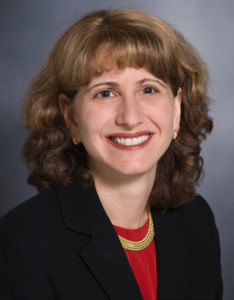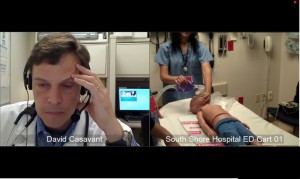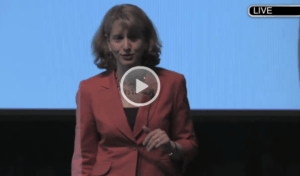 Naomi Fried, PhD, Chief Innovation Officer at Boston Children’s Hospital, will lead a panel on Innovation Acceleration at Taking on Tomorrow: Global Pediatric Innovation Summit + Awards (October 30-31, Seaport World Trade Center, Boston). Register now!
Naomi Fried, PhD, Chief Innovation Officer at Boston Children’s Hospital, will lead a panel on Innovation Acceleration at Taking on Tomorrow: Global Pediatric Innovation Summit + Awards (October 30-31, Seaport World Trade Center, Boston). Register now!
The word innovation gets thrown around a lot these days by people trying to set their products and ideas apart in the marketplace. But when everything is innovative, is anything really innovative? And if there really are innovative ideas, are they simply flashes of brilliance that can’t be planned for or predicted?
The answer to this last question is “no,” as I see every day at Boston Children’s Hospital, where I lead the Innovation Acceleration Program. The real trick is creating an innovation culture that supports great ideas—but that also supports the not-so-great ideas that teach us almost as much.
So what are the attributes of an innovation culture? Full story »

(Diane Campbell Payne, used with permission)
Naomi Fried, PhD, is chief innovation officer at Boston Children’s Hospital. This post is adapted from her remarks at the Connected Health Symposium on October 24, 2013. She tweets @NaomiFried.
In the health care industry, we rely heavily on regulations to ensure the safety of our patients, procedures and drugs. New national health care regulations can even spur innovation in care delivery, but in the case of telehealth, they can be an impediment.
Telehealth, the remote delivery of care via computers, mobile devices, videoconferencing and other technologies, has great potential to improve the patient experience and reduce health care costs by removing the barriers of brick and mortar. At Boston Children’s Hospital, the Innovation Acceleration Program’s pilot telehealth programs have focused on both direct patient care and virtual clinician-to-clinician consultations.
Unfortunately, most states’ regulations are limiting providers’ ability to broadly offer telehealth services. Full story »
 Naomi Fried, PhD, is Boston Children’s Hospital’s first Chief Innovation Officer and a founder of the hospital’s Innovation Acceleration Program. She tweets @NaomiFried.
Naomi Fried, PhD, is Boston Children’s Hospital’s first Chief Innovation Officer and a founder of the hospital’s Innovation Acceleration Program. She tweets @NaomiFried.
Considering that Boston is home to some of the country’s best medical, scientific and technological minds, it is little surprise that the city has a vibrant startup ecosystem. That ecosystem lowers barriers to creating groundbreaking innovations, connecting innovators to funding, mentorship and human capital. Yet, it isn’t very well-suited to help health care software innovators, who face a unique set of challenges.
The unique and increasingly complex IT environment within health care institutions is one of the biggest barriers to the development of novel clinical software solutions. To start with, health care delivery IT environments boast complicated safeguards to keep medical information secure. In addition, as these environments grow in scope and complexity, keeping pace with advances in clinical technology, it becomes harder to incorporate new software. Full story »

Boston Children's David Casavant, MD, in a mock TeleConnect drill with South Shore Hospital.
Naomi Fried, PhD, is Boston Children’s Hospital’s chief innovation officer. Shawn Farrell, MBA, Telehealth Program Manager at Boston Children’s Hospital, contributed to this post.
Imagine yourself in an emergency department taking care of a very sick child. Should he be transferred to a higher-level care setting? Can he safely go by ambulance, rather than helicopter? As a doctor, you would like to consult virtually with colleagues and experts at remote locations.
Then imagine yourself in a large room in the heart of Silicon Valley, just a stone’s throw from Cupertino and Apple headquarters. In that room are 5,000 of the biggest thinkers in health care and technology, exploring the next major paradigm shift in care delivery: telehealth. You realize that health care is on the brink of a telehealth explosion.
The energy was palpable as I took the stage at the recent American Telemedicine Association (ATA) conference. I was there to share our experiences launching the TeleConnect program at Boston Children’s Hospital, Full story »
Naomi Fried, PhD, is Boston Children’s Hospital’s chief innovation officer. This post is adapted from her opening keynote address this week at the Institute for Health Technology Transformation (iHT2) annual conference in Atlanta.

Fried giving the opening keynote at iHT2
CLICK HERE TO WATCH THE KEYNOTE
Innovation is one of the most talked-about subjects in business and now health care. It is also one of the most misunderstood subjects. People confuse innovation with creativity, brainstorming and invention.
Simply put: Innovation is a process for testing and developing new ideas. Innovation in health care organizations does not happen by chance, and in fact follows a predictable course.
Several years ago I developed the idea of an innovation “lifecycle,” comprised of six predictable stages with a gap in the middle (more on that gap below). It’s a powerful paradigm for understanding and organizing innovation in a health care organization (or any organization, for that matter).
Stage 1: Initiate
An innovation’s lifecycle begins with the identification of a problem or opportunity. Full story »

(Quinn Dombrowski/Flickr)
I spent my Valentine’s Day with the people I love — the wonderful, creative, hardworking innovators at Children’s Hospital Boston. Excitement, curiosity and, yes, love were in the air as guests came to hear about emerging clinical innovation projects at Children’s first annual Innovation Day.
It was a chance to recognize and celebrate 17 quiet heroes. Innovators often feel isolated, and for some last week, it was the first time they and their ideas had been acknowledged publicly. Some were meeting each other for the first time.
Children’s has a long and rich history of innovation, born of the need to care for our small patients. From Mary Ellen Avery‘s discovery of the lack of lung surfactant in premature babies to Judah Folkman’s path-breaking work on angiogenesis, history shows that innovation, then as now, requires perseverance.
While being an innovator may seem glamorous, and while we idolize celebrity innovators like Steve Jobs and Mark Zuckerberg, the truth is that innovation is really hard work. Full story »

President Obama signs the Patient Protection and Affordable Care Act, March 23, 2010 (Pete Souza/Wikimedia Commons)
National healthcare reform, including President Obama’s Affordable Care Act of 2010, is being driven by widespread dissatisfaction with the high cost and limited accessibility of care. Although we’ve yet to feel the full impact of these national reforms, the reform experience in Massachusetts indicates that mandated universal coverage, by itself, has failed to drive down costs.
So, in Massachusetts, we’re now in the next phase of healthcare reform, focusing on how to control and cut costs while still providing nearly universal access to high quality services and care. The need to bring down costs is stimulating healthcare innovation in three major areas – perhaps offering some lessons for the nation as it moves toward universal care. Full story »

Innovation isn't simply random flashes of brilliance, but requires a culture that supports great ideas while allowing the freedom to fail.
The word innovation gets thrown around a lot these days by people trying to set their products and ideas apart from everything else out there. But when everything is innovative, is anything really innovative? And if there really are innovative ideas out there, are they simply flashes of brilliance that can’t be planned for or predicted?
The answer to this last question is “no,” as I see every day as Chief Innovation Officer here at Children’s Hospital Boston. The real trick is creating an innovation culture that supports great ideas – but that also supports the not-so-great ideas that teach us almost as much.
So what are the attributes of an “innovation culture”? Full story »
 Naomi Fried, PhD, Chief Innovation Officer at Boston Children’s Hospital, will lead a panel on Innovation Acceleration at Taking on Tomorrow: Global Pediatric Innovation Summit + Awards (October 30-31, Seaport World Trade Center, Boston). Register now!
Naomi Fried, PhD, Chief Innovation Officer at Boston Children’s Hospital, will lead a panel on Innovation Acceleration at Taking on Tomorrow: Global Pediatric Innovation Summit + Awards (October 30-31, Seaport World Trade Center, Boston). Register now! 













